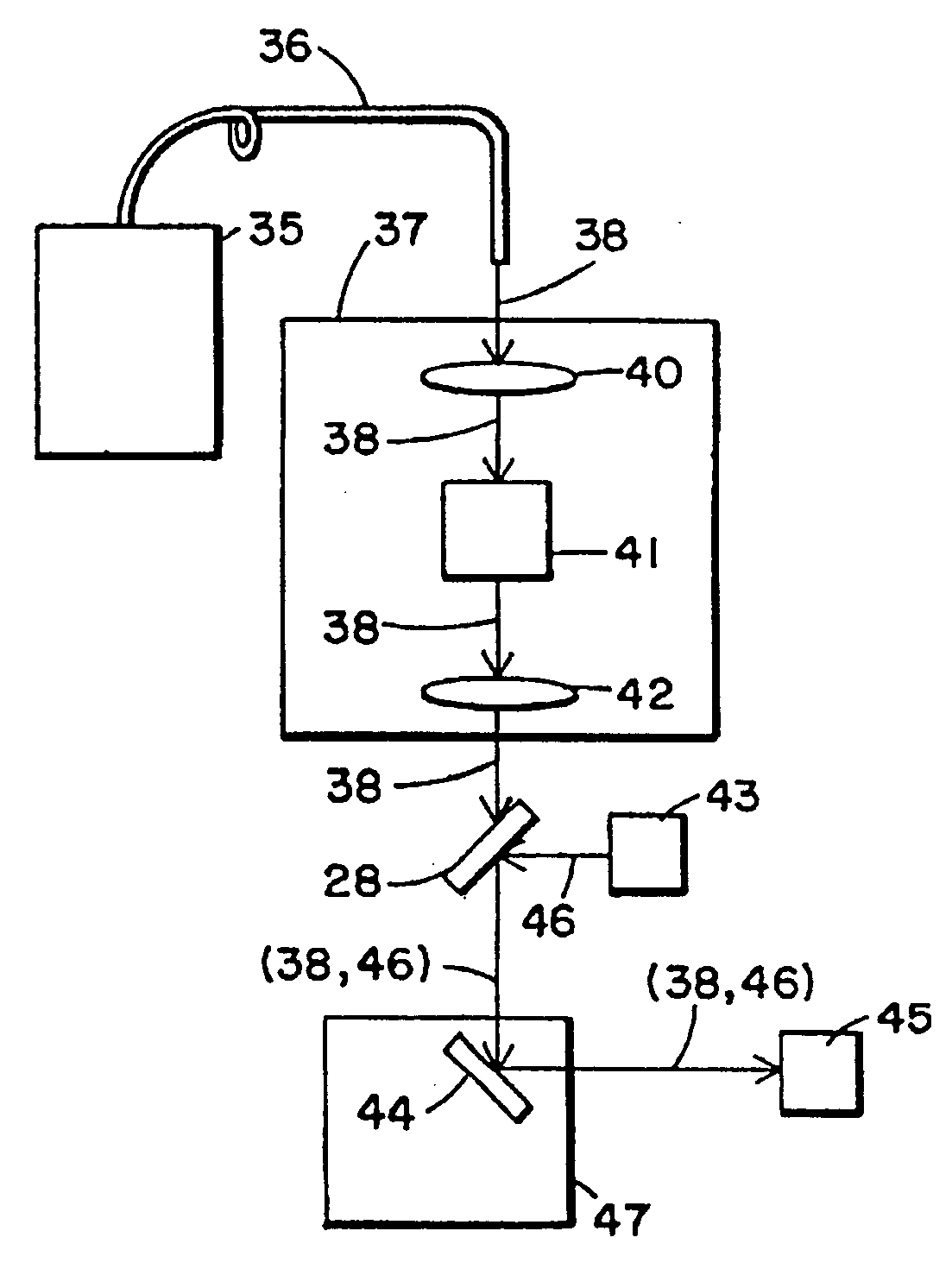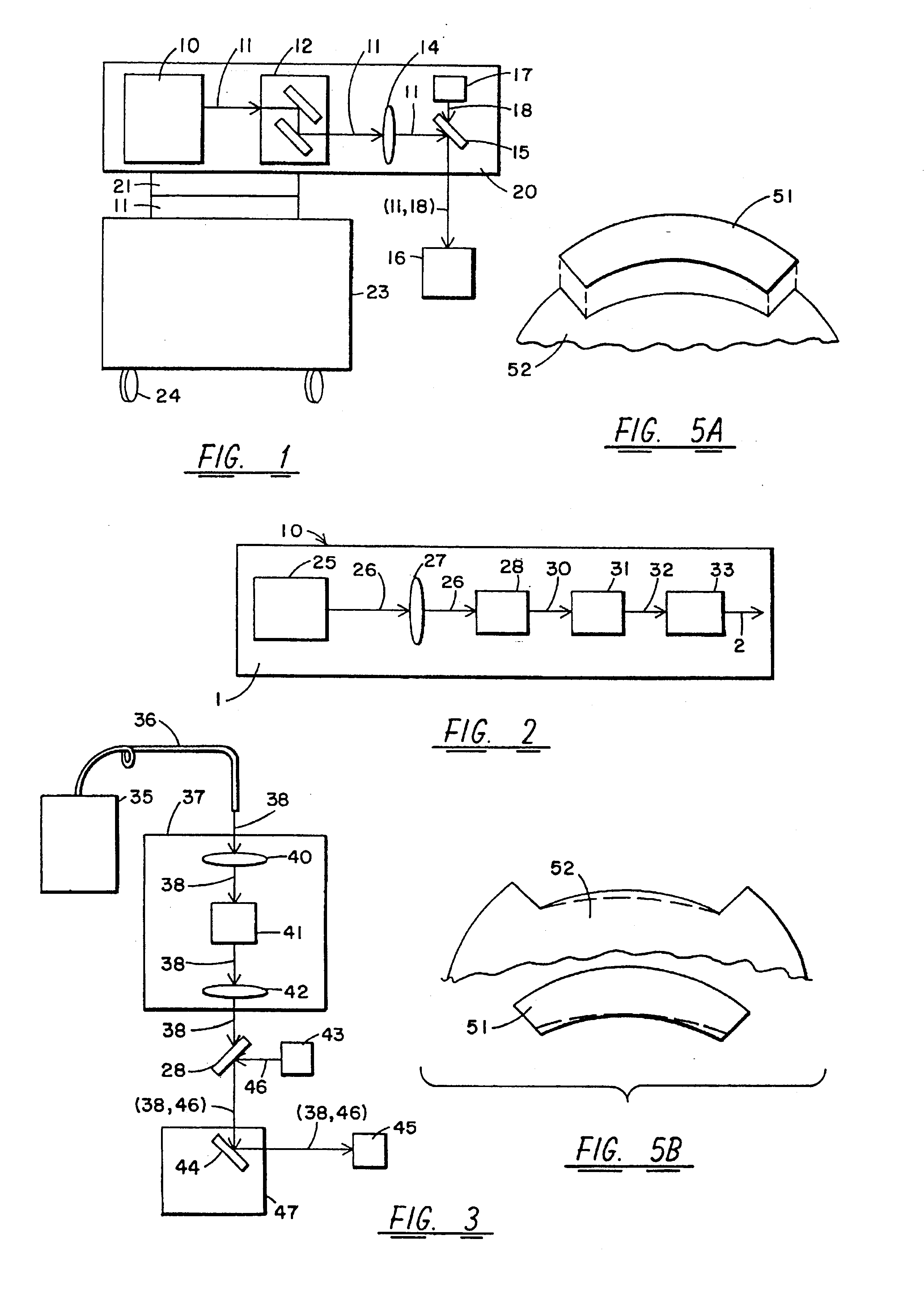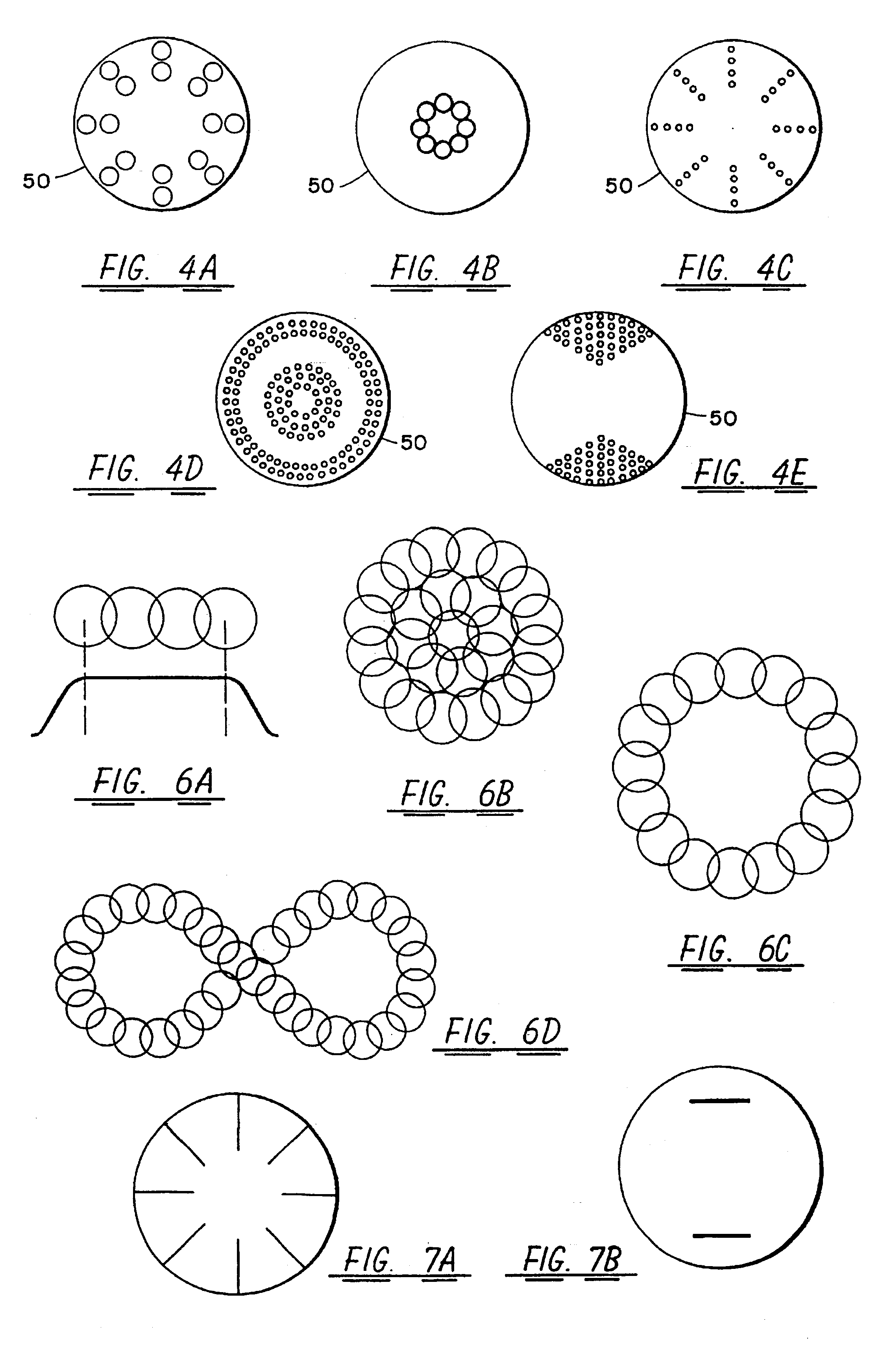Ophthalmic surgery method using non-contact scanning laser
a scanning laser and laser technology, applied in the field of laser ophthalmic surgery, can solve the problems of difficult beam steering and scanning of high-power, heavy-weight excimer lasers, and achieve the effect of low-power
- Summary
- Abstract
- Description
- Claims
- Application Information
AI Technical Summary
Benefits of technology
Problems solved by technology
Method used
Image
Examples
Embodiment Construction
The theoretical background of the present invention with regards to the beam overlap and ablation rate in photorefractive keratectomy, intrastroma photokeratectomy, synthetic epikeratoplasty, phototherapeutic keratectomy and myopic keratomileusis procedures described in the present invention is as follows.
Given a laser energy per pulse of m (in mJ), an intensity of I (in mJ / cm.sup.2) may be achieved by focusing the beam into an area of A, where I=E / A. For corneal tissue ablation to occur requires the laser intensity (I) to be above the photoablation threshold (PAT), (60-120) mJ / cm.sup.2 for UV-laser (193-215 nm) and (200-600) mJ / cm.sup.2 for IR-laser (2.5-3.2 microns). Therefore it is always possible to tightly focus a laser beam and achieve the PAT value even for a low-energy laser (0.1-5) mJ. The drawback of using a low-energy, small-spot laser for large area ablation is that the operation time will be longer than that of a large-spot but high-power laser. However, time of operati...
PUM
| Property | Measurement | Unit |
|---|---|---|
| Length | aaaaa | aaaaa |
| Length | aaaaa | aaaaa |
| Length | aaaaa | aaaaa |
Abstract
Description
Claims
Application Information
 Login to View More
Login to View More - R&D
- Intellectual Property
- Life Sciences
- Materials
- Tech Scout
- Unparalleled Data Quality
- Higher Quality Content
- 60% Fewer Hallucinations
Browse by: Latest US Patents, China's latest patents, Technical Efficacy Thesaurus, Application Domain, Technology Topic, Popular Technical Reports.
© 2025 PatSnap. All rights reserved.Legal|Privacy policy|Modern Slavery Act Transparency Statement|Sitemap|About US| Contact US: help@patsnap.com



